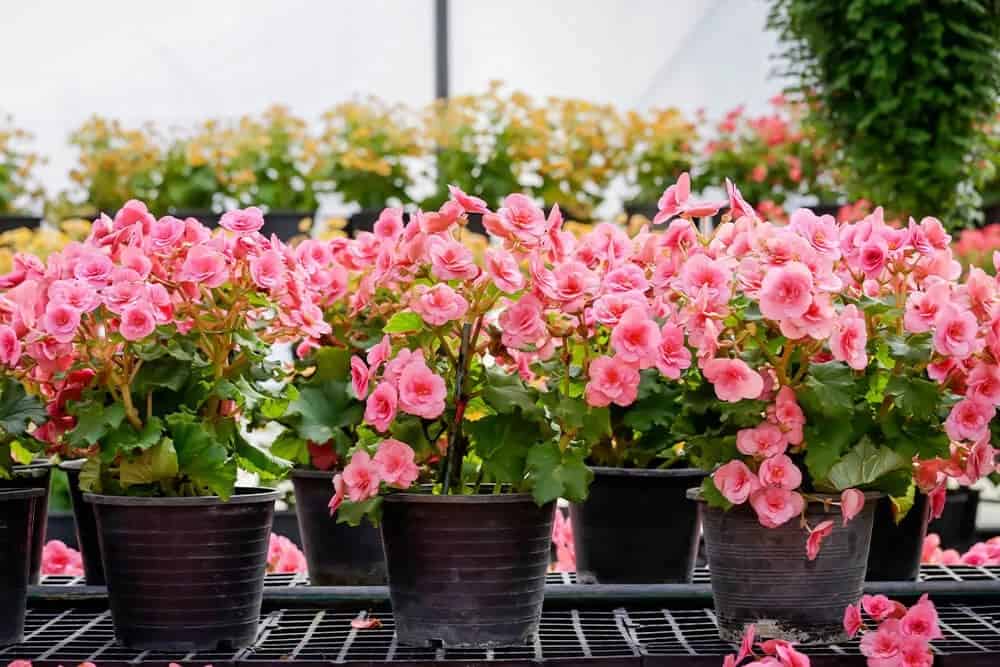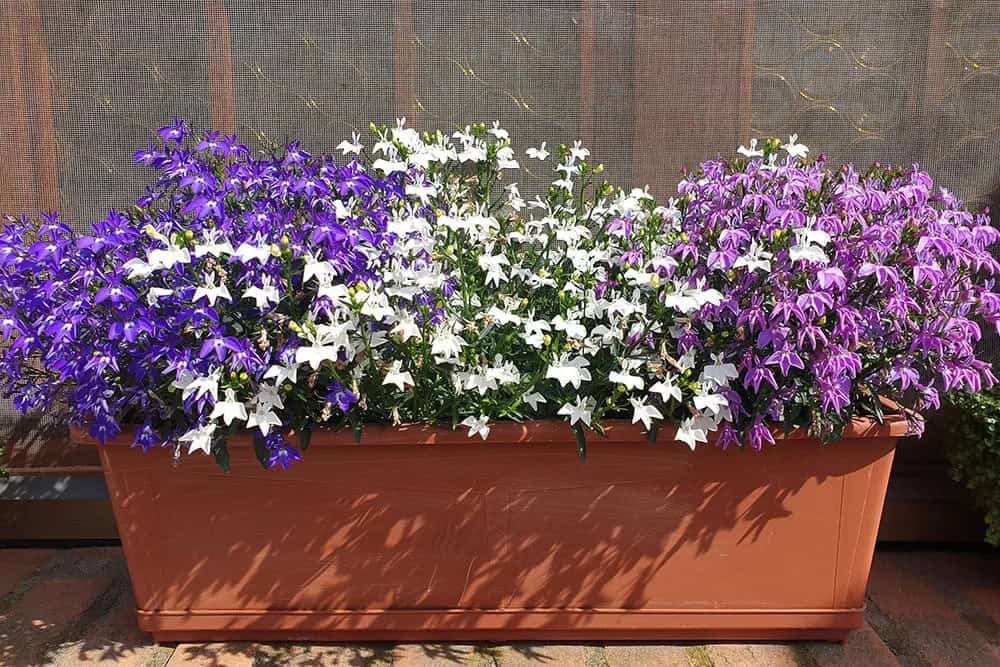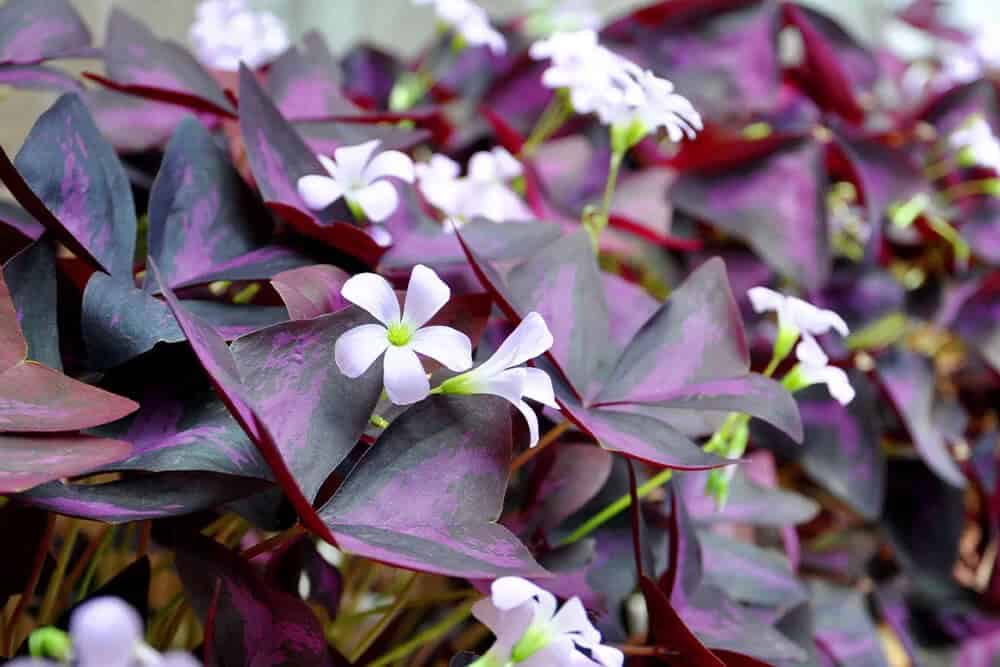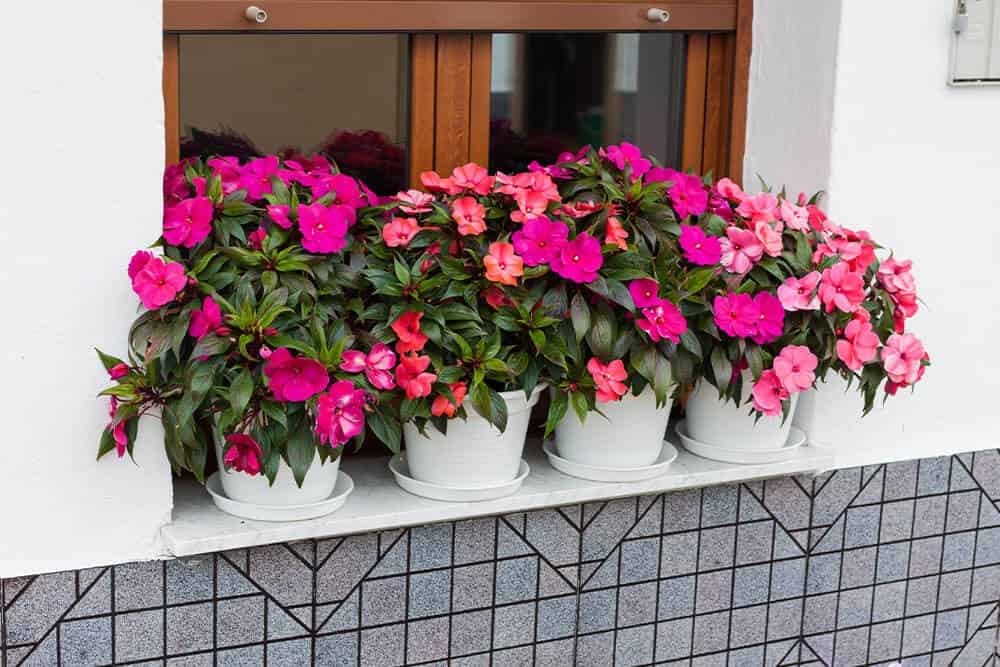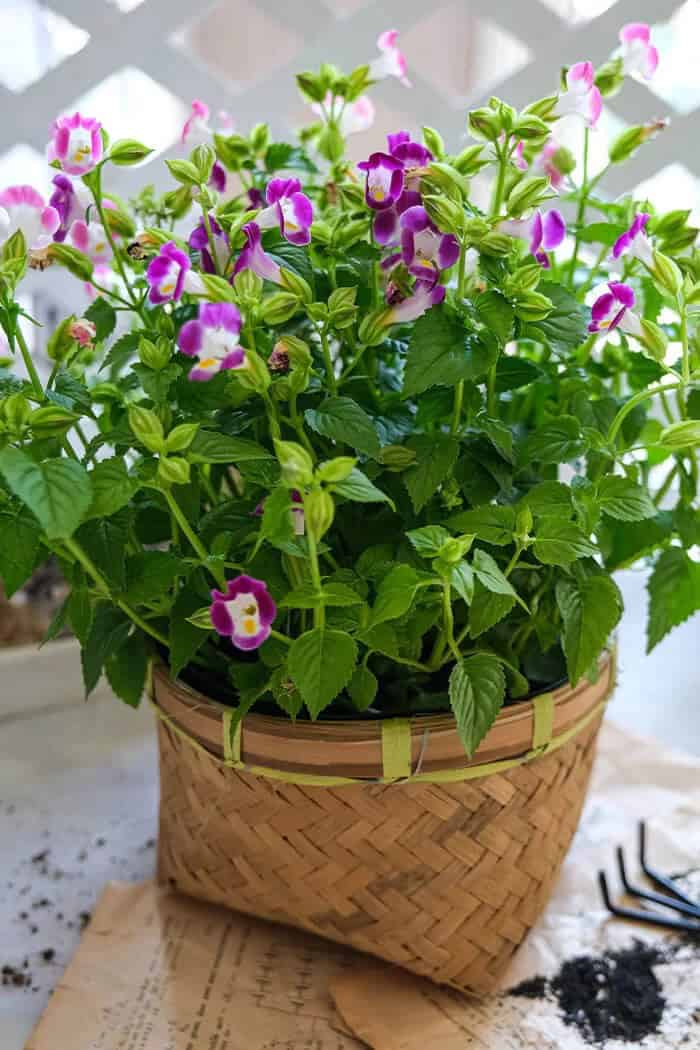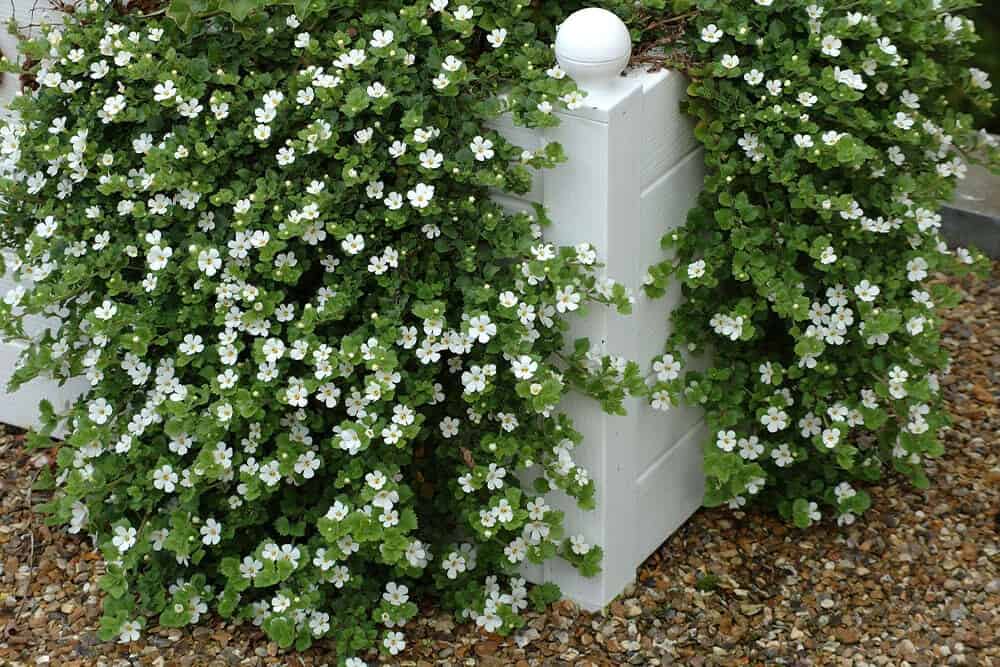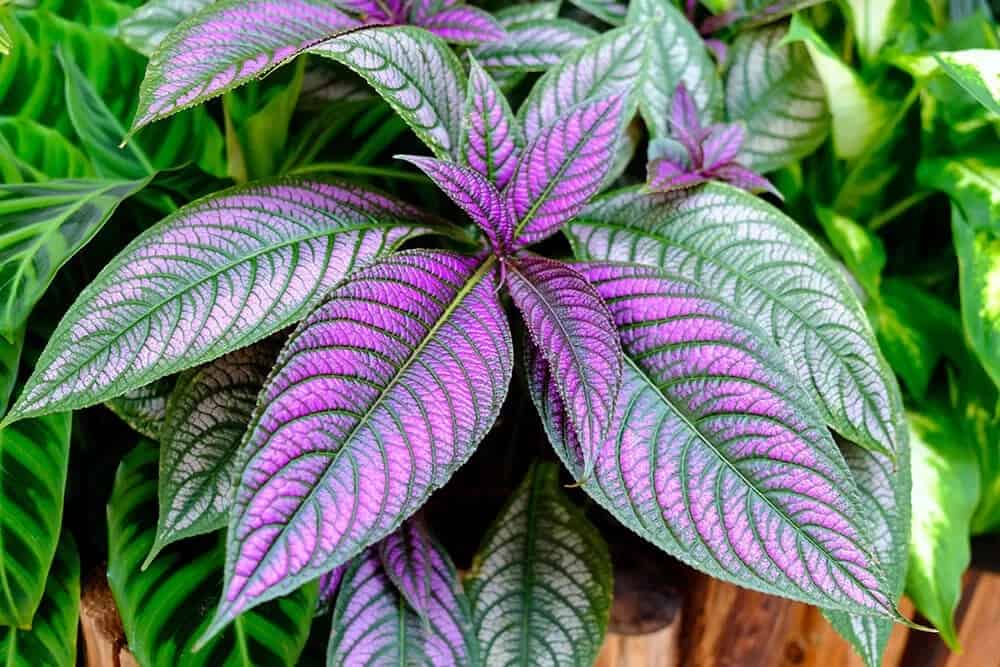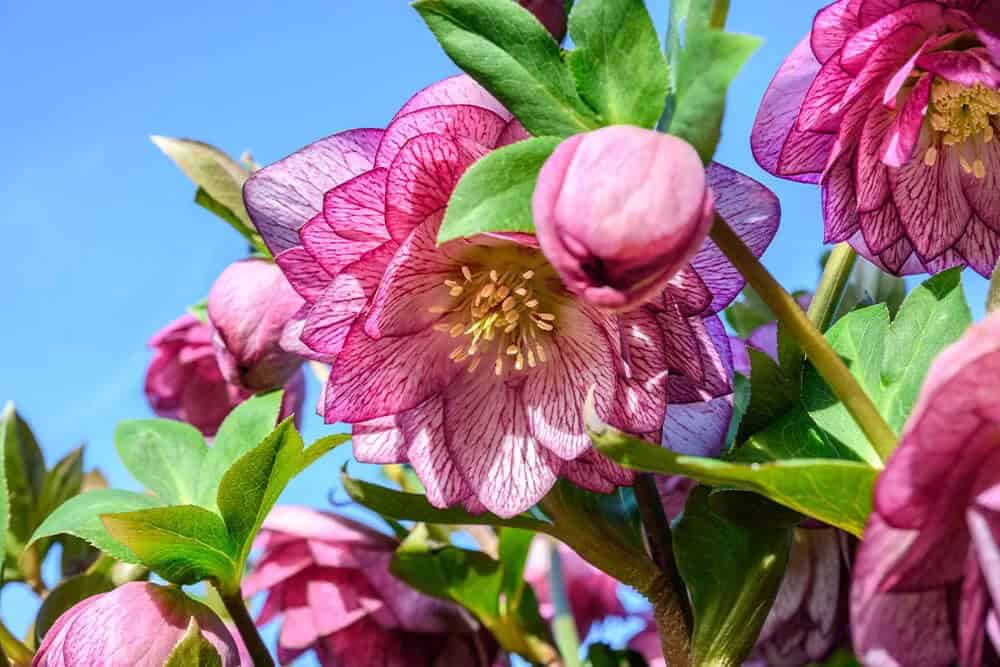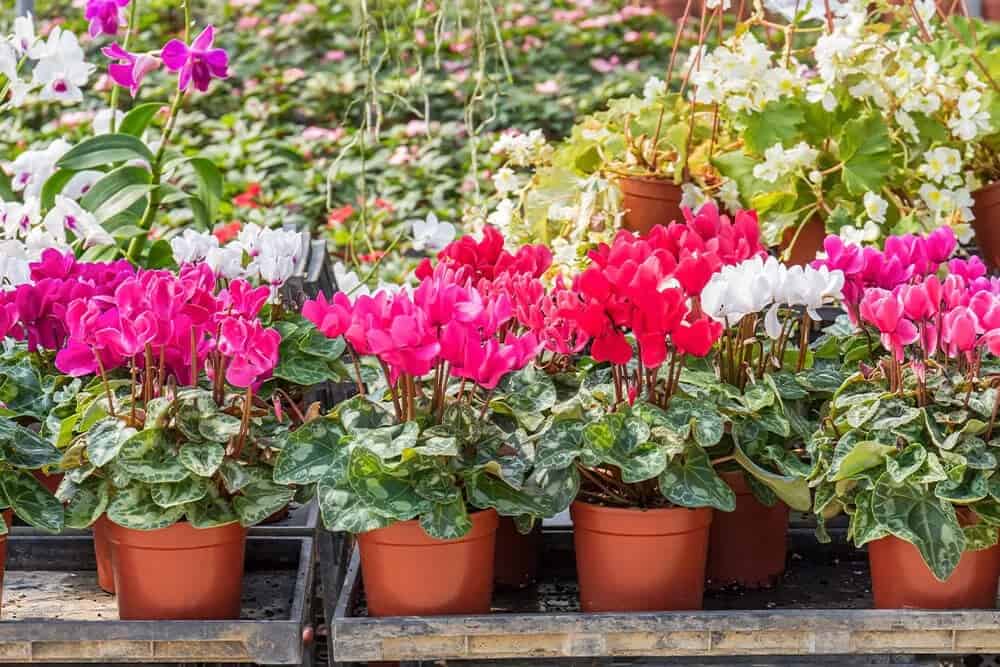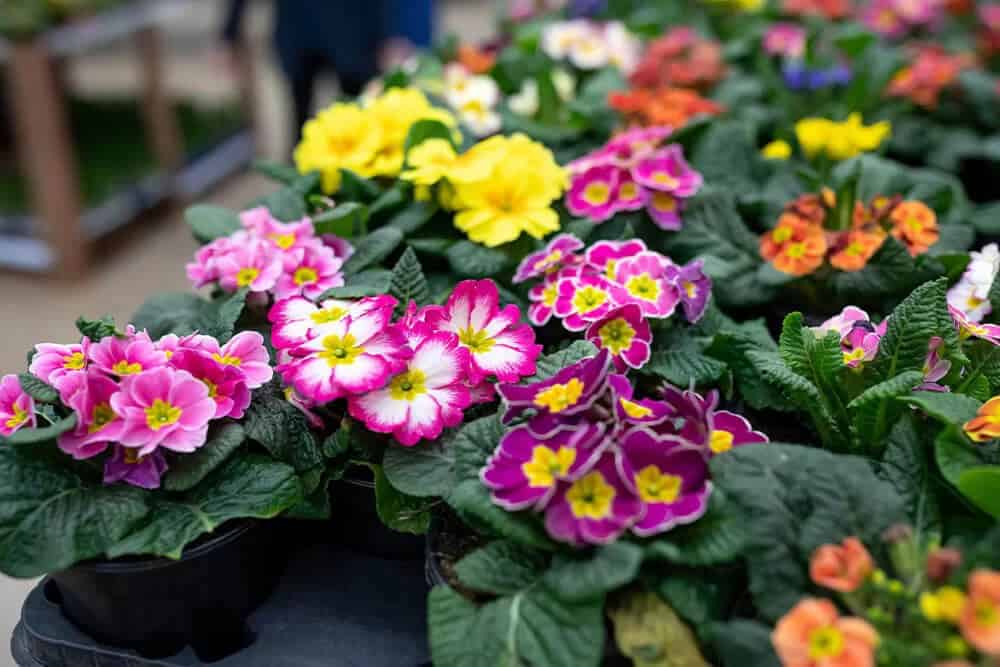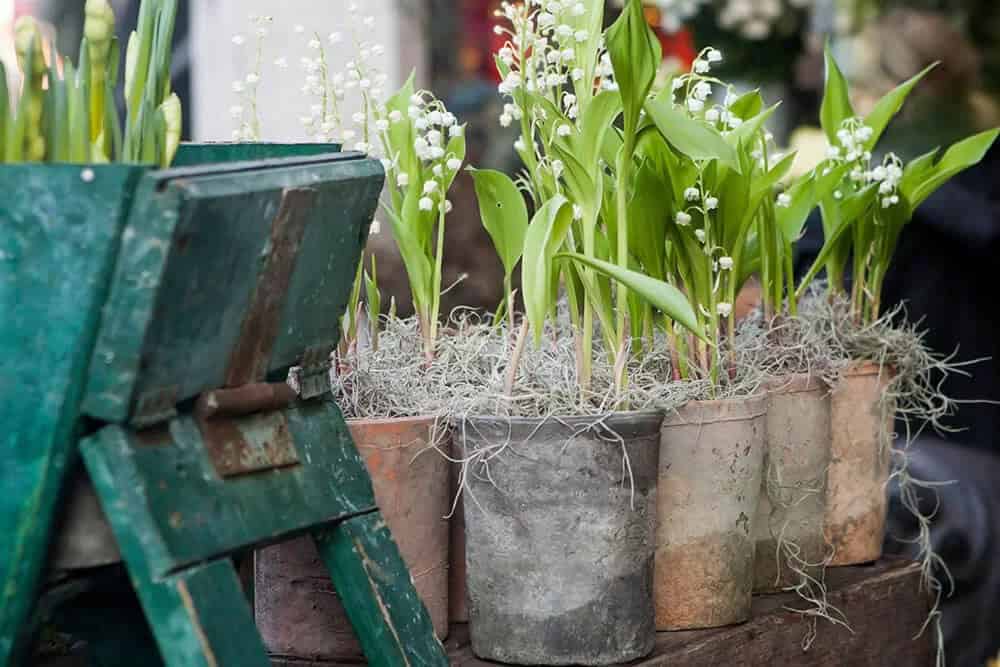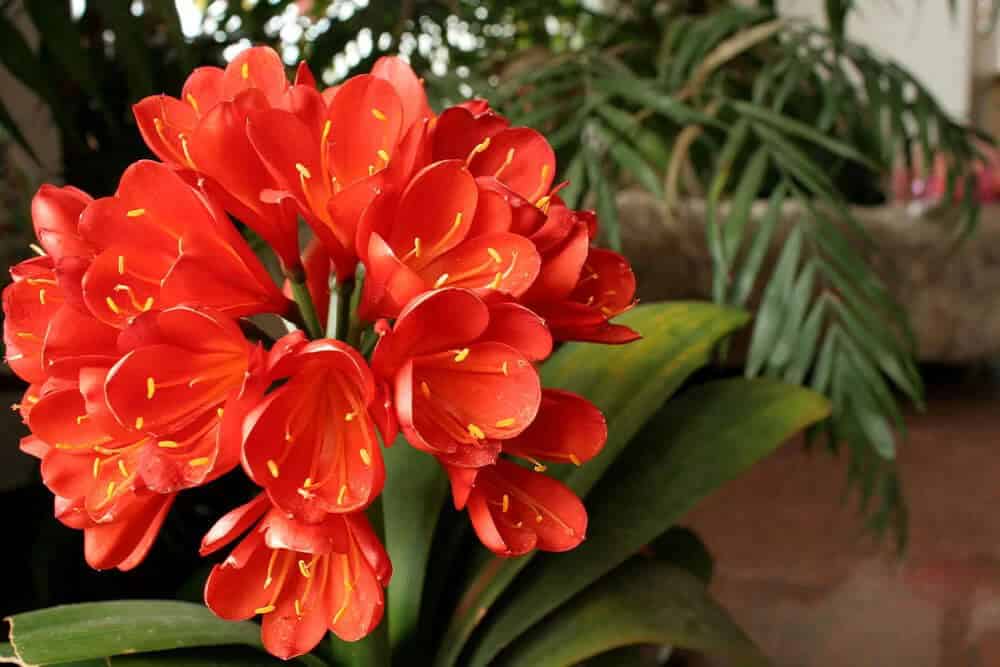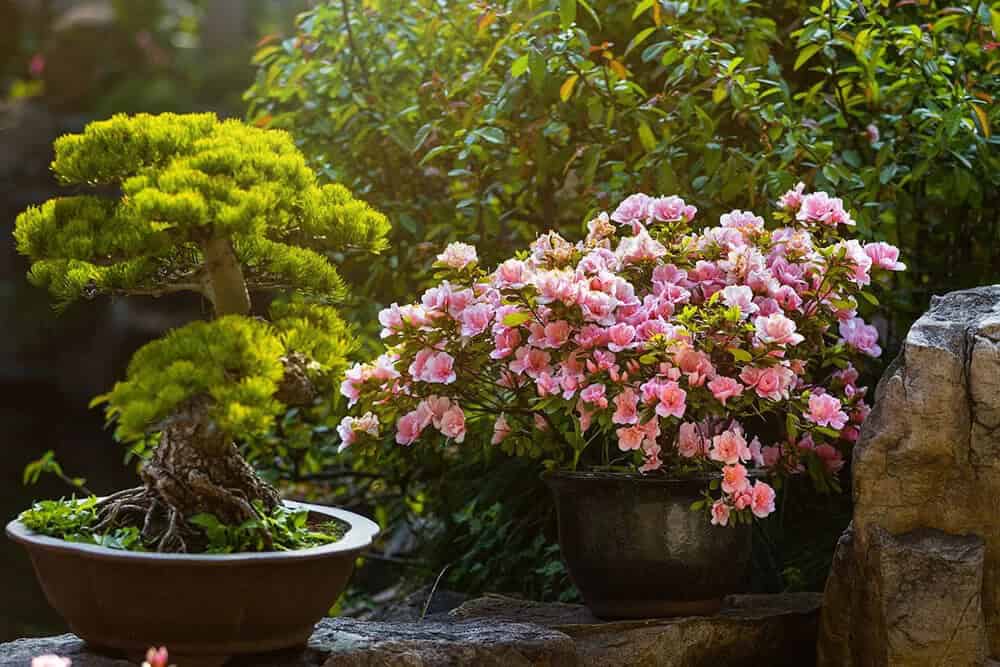Transform dark corners of your garden into thriving sanctuaries by incorporating shade plants for pots. These captivating plants are specifically adapted to thrive in low-light conditions, where they can flourish without the harsh effects of direct sunlight. The beauty of shade plants lies not only in their striking foliage and vibrant blooms but also in their unique ability to tolerate partial shade or full shade environments.
As a result, they require minimal maintenance as moisture levels remain consistent, allowing you to enjoy their lush, luscious appearance with less fuss.
Key Takeaways
Whether you’re looking to add a pop of color or a touch of elegance to your outdoor space, shade plants for pots offer endless possibilities. With a vast array of shapes and sizes, these plants can thrive as thrillers, spillers, and fillers in containers. Many shade plants boast stunning foliage, reminiscent of their naturally shady counterparts. In fact, some bedding plants that are renowned for their vibrant flowers also make perfect shade plants for pots, offering months of colorful blooms.
Perennials, too, can be used to great effect as shade plants for pots, and the best part is that they can be transplanted to a new location at the end of the season. Alternatively, you can keep your favorite shade plant in its pot and enjoy it as an adorable houseplant.
18 Beautiful Shade Plants for Pots that are Perfect for Less Sunny Gardens
Fuchsia (Fuchsia)
Fuchsia’s numerous cultivars offer a delightful array of options to explore. These plants are renowned for their showy, pendulous flowers that bloom abundantly throughout the season, thriving in shaded conditions with moist warmth and protection from wind. While they can tolerate some dappled sunlight, direct hot sun should be avoided.
With the right environment, Fuchsia is an effortless plant to cultivate, yielding vibrant, brightly colored single or double blooms in shades of red, pink, and purple. Many varieties feature unique contrasting colors, adding visual interest to their elegant, naturally cascading growth habit, making them a perfect choice for pots in shaded areas.
Bleeding Heart (Dicentra)
Bleeding Heart (Dicentra spectabilis) is a stunning perennial that thrives in USDA zones 4 to 8, producing showstopping red flowers shaped like hearts on pendulous stems. When grown as a shade plant in pots, it’s an excellent choice for adding visual interest even after the blooms have faded. Many cultivars boast intricately divided or deeply lobed leaves reminiscent of ferns, providing year-round appeal.
As other shade plants reach their full potential late in the season, Bleeding Heart’s foliage takes a backseat, only to return with a vengeance when planted directly in the garden for a repeat performance next spring.
Coral Bells (Heuchera)
Coral Bells, also known as Heuchera, is another exceptional shade-loving foliage plant that thrives in containers or as a perennial in USDA hardiness zones 4 to 9. Its unique, scalloped leaves display a stunning range of colors from deep purple to vibrant yellow-green, making it an excellent choice for adding visual interest to shaded areas.
Notably, Coral Bells reaches its peak foliage color just when Bleeding Heart’s flowering period ends, allowing the two plants to complement each other beautifully. When planted together in pots or gardens, they can create a harmonious partnership that persists into subsequent springs. In addition to its striking leaves, Coral Bells produces delicate, bell-shaped flowers on slender stalks during midsummer to frost, adding an extra layer of charm to this already captivating plant.
Dichondra (Dichondra argentea)
Dichondra’s trailing habit makes it an ideal luxurious spiller for overflowing your pots with lush green or silver foliage. This annual plant may only grow up to 4 inches tall, but its long shoots can trail an impressive 4 feet in length. Not picky about light conditions, Dichondra thrives in shade and can even handle partial sun, requiring just a few hours of direct sunlight each day to maintain its vibrant appearance.
Its versatility makes it a top choice for pots, hanging baskets, and window boxes, particularly when you need a shade-loving spiller that can add depth and visual interest without overpowering the surrounding space.
Begonia (Begonia)
Begonias are a popular choice for shade-loving plants that thrive in pots. With over 1800 species, this extensive genus offers hundreds of varieties perfect for container gardening in shaded areas. The vibrant blooms of Begonias emerge above their striking leaves, showcasing a kaleidoscope of colors including orange, pink, white, red, and bi-colored hues.
To cultivate healthy, flourishing Begonias that bloom from mid-summer to frost, it’s essential to strike the right balance between moisture levels – not too wet nor too dry, with above-average drainage being key. Most varieties are hardy in USDA zones 6 to 11 and can grow from tubers or rhizomes. For regions with colder climates, a simple yet effective strategy is to lift the roots in the fall, store them properly, and replant in spring once all risk of frost has passed.
Lobelia (Lobelia erinus)
The mesmerizing display of delicate fan-shaped flowers on upright or trailing stems in a kaleidoscope of colors – blue, violet, pink, and red – is a sight to behold. Lobelia’s versatility makes it an excellent filler plant that thrives in both full sun and partial shade. Its soft, muted hues make it an ideal companion for many shade-loving plants, adding a touch of movement and subtle color to the arrangement. As an annual, Lobelia tends to flourish in rich, moist, organic soils.
After its initial spring bloom, simply prune the plant back to encourage a more abundant fall display. Lobelia’s compact growth habit makes it suitable for containers, reaching heights of 6-12 inches high and wide.
Oxalis (Oxalis)
While Oxalis, also known as Shamrock, is often used as a low-maintenance houseplant to brighten up indoor spaces, its potential as an outdoor shade plant in pots is equally impressive. In fact, this versatile plant can thrive in shaded areas when grown outdoors and even be brought indoors for the winter months if temperatures drop too low.
The unique shamrock-like leaves add a pop of color and texture to outdoor shade container gardens, while also folding together delicately in low-light conditions. With varieties featuring burgundy leaves and blush pink flowers, multicolored leaves, or pure green leaves with blooms in white, pink, yellow, and peach, Oxalis is an excellent choice for adding visual interest to shaded areas.
Impatiens (Impatiens)
Impatiens are often referred to as the queen of shade plants for containers, and it’s easy to see why. Their vibrant blooms can be enjoyed from June until the first frost, making them a popular choice for decades. These compact plants grow to be around 6-24 inches tall and wide, making them perfect for small spaces. As tender perennials, Impatiens are typically treated as annuals outside of USDA zones 10 and 11.
One of their defining characteristics is the continuous display of bright, showy flowers that come in a range of colors including red, pink, purple, coral, lilac, orange, rose, peach, and white. These blooms can be single- or double-petaled, adding to their beauty. To encourage bushier growth, Impatiens respond well to being pinched back. They also thrive in consistently moist, nutrient-rich soil, making them a great choice for gardeners who want low-maintenance, high-reward plants.
Torenia (Torenia fournieri)
The Wishbone flower, also known as Torenia, is a shade-loving bloom that thrives all summer long, even in areas with full sun to partial shade. Measuring between 6-18 inches tall, this compact plant has a unique trait – it trails and cascades beautifully out of containers, making it an excellent choice for hanging baskets or groundcover. One of the biggest advantages of Torenia is its ability to tolerate some heat while still requiring minimal maintenance.
Unlike many flowering plants, Wishbone flower doesn’t need deadheading, allowing the vibrant bicolor or tricolor blooms in shades of blue, purple, burgundy, pink, white, and yellow to continue flowering throughout the season. In particular, it excels in rich, well-drained soils, making it an ideal choice for gardeners seeking a low-maintenance yet visually appealing addition to their outdoor spaces.
Monkey Flower (Mimulus ringens)
Monkey flowers produce an unusual snapdragon-like bloom that can spark the imagination with its monkey-faced appearance. This long-blooming beauty thrives from June to September, making it a popular choice for bedding plants and annuals. The vibrant hues of yellow, orange, and red are a natural charm, although purple and lilac varieties also exist. Interestingly, some Monkey Flower species trail, while others grow upright, offering versatile options as spiller or filler plants in the garden.
As native to bog-like environments, these flowers flourish in moist soils and partial shade, where they can’t dry out.
Trailing Bacopa (Sutera cordata)
Trailing Bacopa is a stunning shade plant that boasts gorgeous trailing habits and snowflake-white blooms, making it an ideal choice for pots. With the latest developments in this variety, you can now find frilled flowers and double flowers in a range of colors, including pinks and blues, in addition to the classic white.
As this plant spreads and cascades up to 4 feet, it’s sure to overflow your planters, containers, and pots with lush foliage and vibrant blooms that persist from spring to frost. Trailing Bacopa is particularly vigorous and prolific, thriving on extra nutrition. While deadheading isn’t necessary, regular pruning of damaged stems can promote healthy growth and a luxurious appearance.
Persian Shield (Strobilanthes dyeranus)
Persian Shield is a standout broadleaf evergreen that boasts vibrant, exotic foliage. A thrill to grow in pots, this shade-loving plant can reach heights of 3-4 feet, commanding attention in containers. The leaves’ intricate patterns of purple, green, and silver veins and variegation take on a new level of drama when given some direct sunlight. With ease, Persian Shield thrives in partial shade conditions. To encourage full, bushy growth, simply pinch back the stems.
While typically an annual, this gorgeous foliage plant has adapted to life as a houseplant in USDA zones 10-11, allowing it to be nurtured indoors.
Hellebore (Helleborus)
Adding Hellebores to your shade plant collection is a bold and intriguing move, as these early spring blooming perennials bring unique charm to your pots. Their thick evergreen foliage forms a low-growing clump of lobed or palmate leaves, perfect for filling gaps in your shade containers. Dubbed the Lenten rose or Christmas rose, some Hellebores bloom as early as Christmas, while others burst forth closer to Easter.
At bloom time, their single or double nodding flowers unfurl in a nostalgic palette of green, white, pink, and wine hues, persisting for an extended period on plants that typically reach 1-to-2 feet tall. As hardy perennials, Hellebores thrive in USDA zones 3 to 9, making them an excellent choice for planting at the end of your container gardening season in a shaded spot.
Hardy Cyclamen (Cyclamen Hederifolium)
Cyclamen, a charming shade plant, excels in containers both indoors and outdoors. Its unique charm lies in its ability to thrive in shaded areas, where it produces an abundance of dainty, 1-inch blooms resembling butterflies, typically emerging late summer. Measuring only 4-6 inches tall, the plant’s heart-shaped foliage features intricate marbling patterns in shades of green, cream, and silver, which remain attractive throughout winter.
As Cyclamen spreads, it can fill a container up to 10-12 inches in diameter. This hardy variety is easily moved indoors for the winter, serving as a lovely houseplant. Alternatively, it can be planted directly into USDA zones 3-9 garden beds, where it thrives in woodland settings and rock gardens.
Primrose (Primula Vulgaris)
Primrose, a kaleidoscope of colors, boasts an astonishing array of flower forms across its numerous varieties. With over 500 types to choose from, Primrose offers an unparalleled range of vibrant hues. The basal rosette’s intricately wrinkled leaves burst forth with striking greenery, announcing the arrival of early spring. Typically the first blooms of April, Primrose flowers thrive in shaded environments, making them perfect for container gardening.
Plant masses of these colorful gems and enjoy their radiant display. Once the show is over, simply relocate containers to less conspicuous areas, allowing the plants to wait patiently for next year’s bloom time. Alternatively, Primrose can be directly planted into garden beds in USDA hardiness zones 4 to 8.
Lily Of The Valley (Convallaria Majalis)
Lily of the Valley’s charming bell-shaped flowers, infused with a romantic scent, make it an ideal choice for pots and containers. As a groundcover, this perennial spreads 1-2 feet, featuring lush green, oblong pointed leaves that reach 10 inches in length. When grown in containers, Lily of the Valley’s foliage can create a stunning mass effect, filling the space with its dense growth.
To fully appreciate the plant’s intoxicating fragrance, place containers near doors and windows during blooming season. For division or thinning, utilize divisions to repot new plants or add them to shaded areas of your garden. Notably, Lily of the Valley is hardy in USDA zones 3-7, making it a reliable addition to many landscapes.
Clivia (Clivia Miniata)
Experience the exotic charm of Clivia, also known as Flame Lily, a stunning shade plant that brings tropical flair to your outdoor space. Its striking evergreen leaves are shaped like broad ovals and grow in an arching pattern from the center of the clumping perennial, which reaches 1-2 feet tall and spreads up to 2-3 feet wide.
Native to South Africa, this beautiful plant is characterized by its vibrant flowers that emerge from a central stalk, boasting gorgeous funnel-shaped blooms ranging from yellows, oranges, to fiery reds. Each stalk can produce an impressive 10-20 blooms at once, making it a showstopping addition to any shade garden.
Camellia (Camellia)
Camellias, a type of flowering evergreen shrub, boast dark green, glossy leaves and vibrant blooms that can be as large as 12 inches in diameter. Native to warm regions with USDA hardiness zones ranging from 7 to 9, these plants thrive during late fall, winter, and early spring. Depending on the specific variety, Camellia shrubs can grow anywhere from 2 to 12 feet tall and 2 to 10 feet wide, making them a great option for hedges or borders.
The blooms themselves come in a range of colors including white, pink, lavender, red, and yellow, adding a pop of color to any landscape. One of the unique characteristics of Camellias is their slow growth rate, which can lead to a long lifespan – some plants have even outlived their original owners! This makes them an inspiring choice for planting in an heirloom planter with the intention of passing it down through generations.
When paired with shade-loving plants and placed in pots, Camellias are a beautiful addition to any garden or indoor space.
Frequently Asked Questions About Shade Plants for Pots
What are the best thrillers for shade?
If you’re looking for a shade garden that packs a punch, look no further than Persian Shield (Strobilanthes dyeranus) and Clivia (Clivia Miniata). These thriller plants are not only stunning but also bring a touch of the exotic to your outdoor space. The Persian Shield is particularly impressive, with its magnificent foliage growing up to 3-4 feet tall in pots. For a more compact option that still delivers big on tropical flair, consider Clivia or Flame Lily.
This showstopper grows 1-2 feet tall and 2-3 feet wide, with each central flower stalk showcasing clusters of funnel-shaped blooms in shades of yellow, orange, and red – up to 20 vibrant flowers at a time.
What plants should I put in my pots?
To create exceptional planters every time, follow the classic formula of combining a spiller, filler, and thriller. Annuals are always a great choice for pots, with countless options available to choose from. Don’t be afraid to think outside the box and try a perennial or shrub that you love in a planter. In colder climates, it’s essential to provide winter protection for perennials and shrubs if they’re planted above ground, ensuring their survival and continued growth.
Should you put rocks in the bottom of a planter?
When it comes to planters, rocks at the bottom can play a crucial role in providing stability, particularly for tall and upright plants that may struggle with wind or strong gusts. The added weight of the rocks helps to anchor the planter in place, giving the plants a sense of security and preventing them from toppling over. Additionally, rocks can also contribute to drainage by allowing excess water to escape, which is essential for plant health.
Should I put anything in the bottom of my planter?
To ensure optimal growth for your plants, it’s essential to use high-quality potting soil with proper drainage in your planter. However, the excess water can escape through the drainage holes, causing you to constantly refill the planter. To resolve this issue, consider incorporating fiber-based materials like coir or landscape fabric that allow water to pass through while retaining the soil within.
Alternatively, a layer of small stones or broken pottery pieces can act as a natural filter, preventing excess water from escaping and keeping the soil in place.
Is it OK to have a planter without drainage holes?
A poorly designed planter can be a recipe for disaster when it comes to the health and survival of your plants. One common mistake is failing to include drainage holes, which can turn a planter into a miniature aquatic environment. While some plants thrive in waterlogged conditions, many others will quickly succumb to root rot and other issues that can arise from poor soil aeration.
By allowing excess water to escape, drainage holes ensure that plant roots receive the oxygen they need to function properly, making for healthier and more resilient vegetation.
18 Colorful Shade Plants for Pots for Lighting Up Shaded Areas of The Garden
Transforming shaded areas into thriving miniature gardens is a fantastic opportunity to showcase an array of gorgeous shade plants for pots. These plants excel as thrillers, spillers, and fillers, adding visual interest and texture to any outdoor space. Perennials are particularly well-suited for life in containers, allowing you to later transplant them to your indoor spaces or directly into the garden, where they’ll continue to thrive.




